Some Columbia River preliminary 2021 salmon forecasts could be a bit of positive news anglers need during these turbulent times Leave a reply
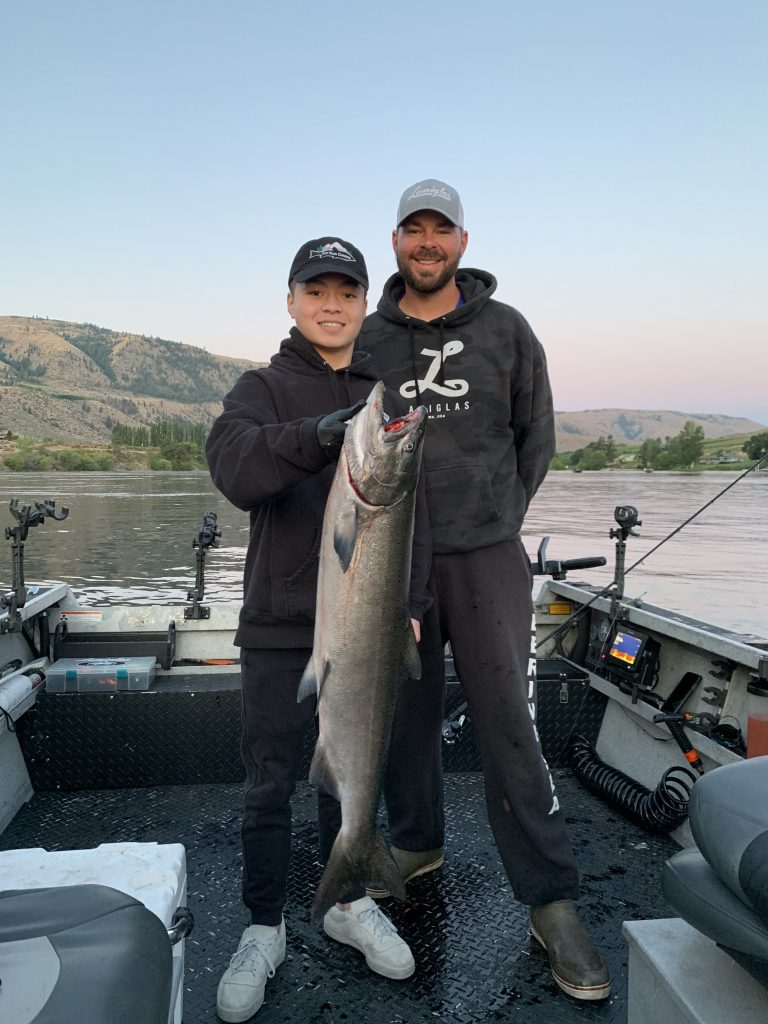
By Mark Yuasa
Are you getting tired of all the bad news? I’m totally worn out from the pandemic, joblessness, economic crisis, presidential election turmoil, fake news, protests, what’s really left or right and the statewide fishing ban this past spring.
Despite all the commotion, I’m feeling good about surviving the madness that 2020 threw in our faces, and look forward with guarded optimism to what 2021 has in store for us.
One of those confidence boosters came to light this past week – no, it’s not the vaccine shipments – when the Washington Department of Fish and Wildlife (WDFW) unveiled their “crystal ball” of 2021 Columbia River salmon forecasts, which disclosed hints of positive vibes for sport fishing.
“I think there are some silver linings for salmon returns in 2021 (and) reason to be optimistic,” said Ryan Lothrop, the WDFW Columbia River salmon fishery manager. “Ocean conditions have put us in a better spot as we’re entering a neutral state (which fosters upwelling of cool, nutrient-rich sea water).”
“We are seeing the fruits growing from that for some summer and fall chinook (returns in 2020),” Lothrop said. “Now we’ll cross our fingers and hope the North of Falcon numbers (to be released sometime in February) show an improvement too.”
The highlight of the 2021 forecasts is the computer generated “paper fish” predictions by WDFW that showed a robust 2020 Columbia River coho jack return, which was the highest seen since 1977 when 90,092 returned to hatcheries.
Lothrop indicated coho are a “wild card” as they migrate to different places in the ocean, but fishery managers are hopeful that the forecasts will continue to come to fruition.
The 2020 predicted adult return was 140,190, and while no preliminary final count for 2020 nor a 2021 forecast has come to light, we can only hope it’ll be much larger allowing for more liberal fisheries in 2021.
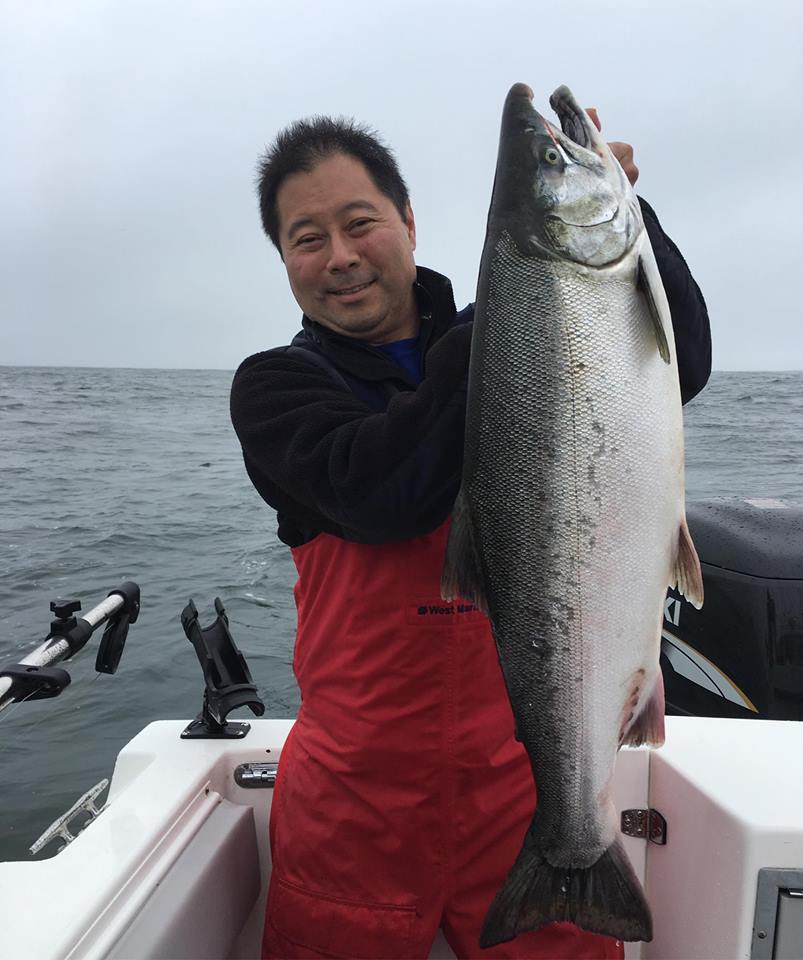
Fishery managers base the following year’s adult coho return on how jack returns looked the year before. While it appears to be a positive outlook there is still some uncertainty related to recovery from events like the “Blob” a massive pool of warm-water phenomenon that showed up in the northern Pacific Ocean from 2012 to 2016 and negatively affected the marine ecosystem.
The Columbia coho stock is divided into two components – the early “A-run” and the late “B-run.” The early run is timed to arrive in September, and the late run makes its appearance in October and November.
Both coho stocks drive the ocean and in-river salmon seasons from Neah Bay south to Ilwaco. This past summer the coast opened on June 20 and led to an early closure by July 26 at Ilwaco and Aug. 7 at Neah Bay as puny quotas – 13,250 coho at Ilwaco and 2,988 at Neah Bay – were gobbled up quickly.
The two coastal ports wedged in between (Westport and La Push) remained open until Sept. 30. The slow catch pace at La Push was attributed to difficult access to the area related to COVID-19 port closures and Westport just had a downright pitifully slow season.
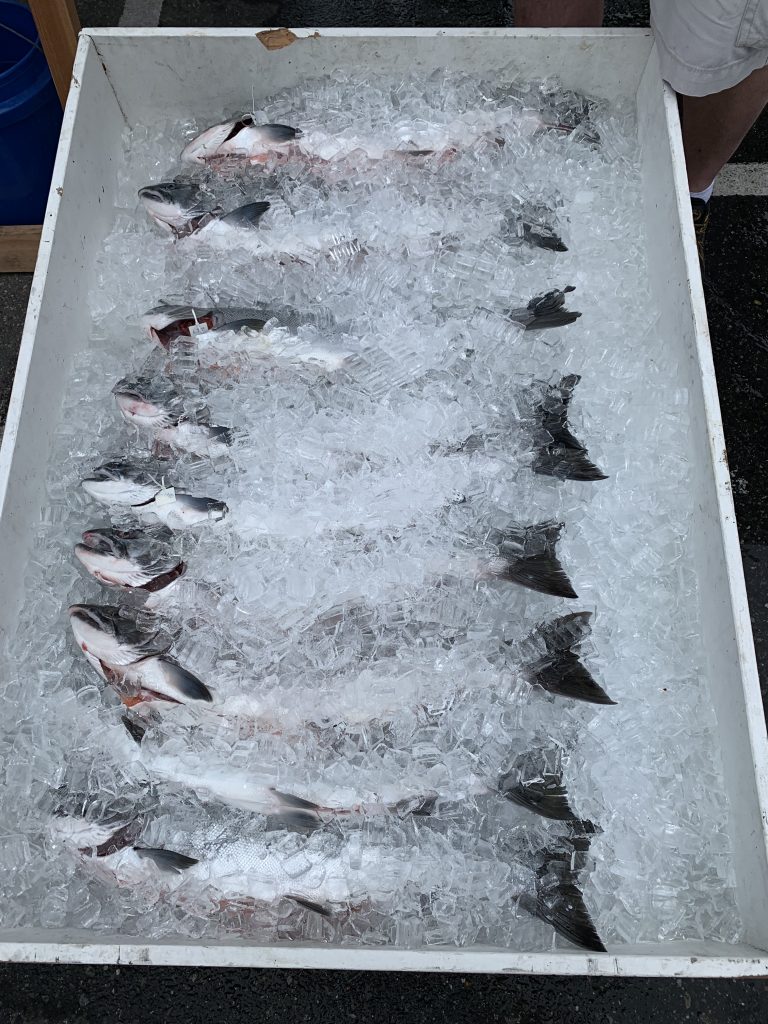
There could also be some positivity as we progress into early summer along the 1,243-mile stretch of the Columbia River.
The Upper Columbia summer chinook return of 77,600 (up from 38,300 forecast and an actual return of 65,494 in 2020, and 36,340 and 34,619 in 2019) waxed expectations.
Fishing for summer run kings also known as “June Hogs” was open in July of 2020 and generated good fishing near Rocky Reach Dam to Chelan Falls and many open areas downstream.
The bulk of the summer chinook fishery occurred July 16-Oct. 15 (season was open with marked selective fishery regulations in various locations including tributaries) upstream of Priest Rapids Dam saw 39,420 angler trips with 4,742 adult chinook kept and 1,772 released.
The summer chinook fishery July 4-31 in Lower Columbia from Tongue Point to Bonneville saw 37,099 angler trips with 1,191 adult chinook kept and 1,504 released, plus 2,069 sockeye kept (the second highest catch total) and 373 released and 1,996 steelhead kept and 2,584 released.
Lothrop pointed out a noticeable improvement on sockeye success in the lower river sport fishery, and fishery managers plan to keep close tabs in the late spring and early summer of 2021.
The summer chinook fishery July 4-31 from Bonneville to Highway 395 Bridge had 2,628 angler trips with five adult chinook kept and six released plus 49 sockeye kept and 237 released and 46 steelhead kept and 67 released; and from Highway 395 Bridge to Priest Rapids Dam it lured 11,054 angler trips with 135 adult chinook kept and 240 released plus 6,262 sockeye kept and seven released.
Those who relished the unexpected 2020 Upper Columbia sockeye summer season – which was the highest return since 2016 – might not like what could be in store for 2021.
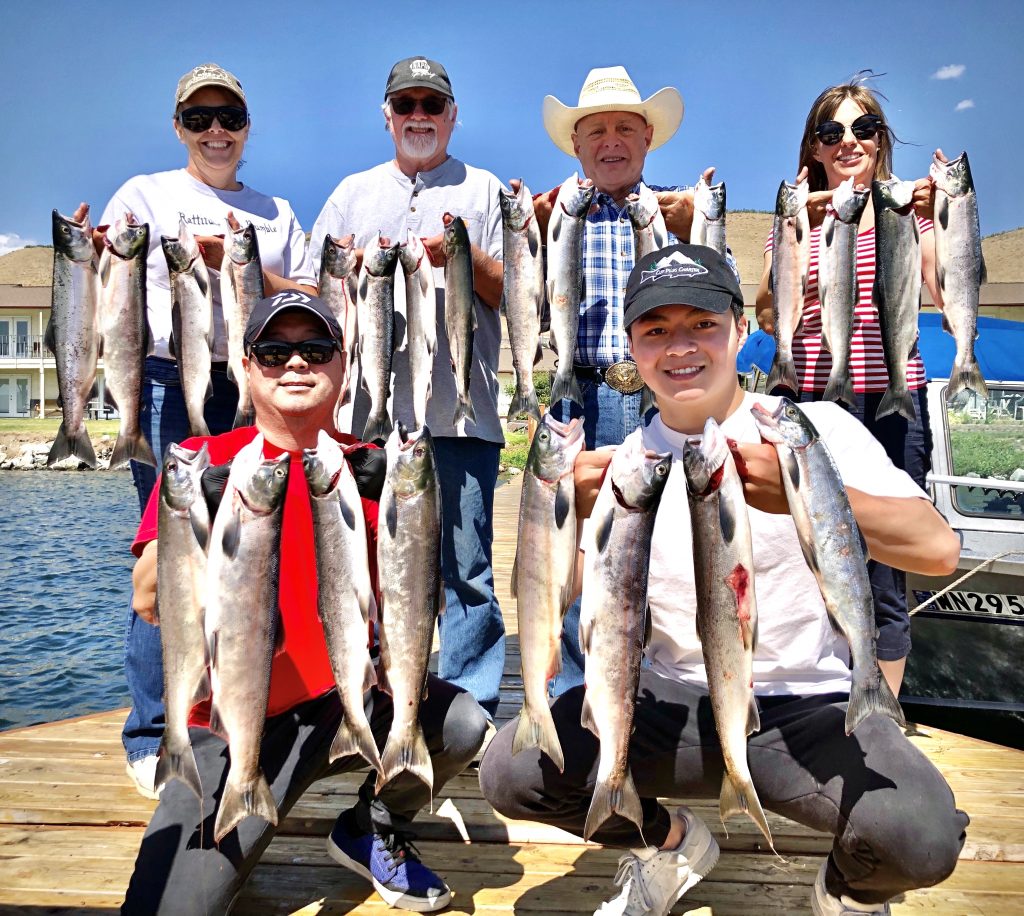
The computer generated “paper fish” prediction is 155,600 sockeye, down considerably from 2020’s forecast of 246,300 and an actual return of 345,018 (94,400 was forecast in 2019 then downgraded in July of 2019 to 62,800, and an actual return was 63,222).
“There was a strong age class of sockeye (outside of the Snake) that largely drove last year’s return and lot of people got surprised by the in-season count,” Lothrop said. “The Okanogan return was the driver and we also had a decent Wenatchee return.”
Of those 127,300 sockeye are destined for the thriving Okanogan River system in 2021 (201,800 was forecasted and 273,667 actually returned in 2020, and 74,500 and 54,300 in 2019) where many linger in the Brewster Pool, a popular early-summer deep-water salmon fishing location on the Upper Columbia. The record return to the Okanogan was 614,180 in 2014.
Sockeye migrate from its confluence just below Chief Joseph Dam, north into its headwater lakes in British Columbia that is known for its notoriously warm water and changing river flow patterns in the summer.
The poor sockeye runs in 2019 can be attributed to the impact of disastrous 2015 drought and hot water that killed off a lot of adult fish. The puny run that survived to spawn led to fewer juvenile fish in recent years, which was then further negated by predation downstream and poor ocean conditions (the worst seen in the last two decades) from “The Blob.”
The summer-migrating sockeye are learning to adapt their upstream migration timing in recent years therefore most fish returns are peaking sooner than later in the summer. Over the past few decades, the run would peak by early July but it’s shifted to late June and has resulted in higher sockeye survival in recent years.
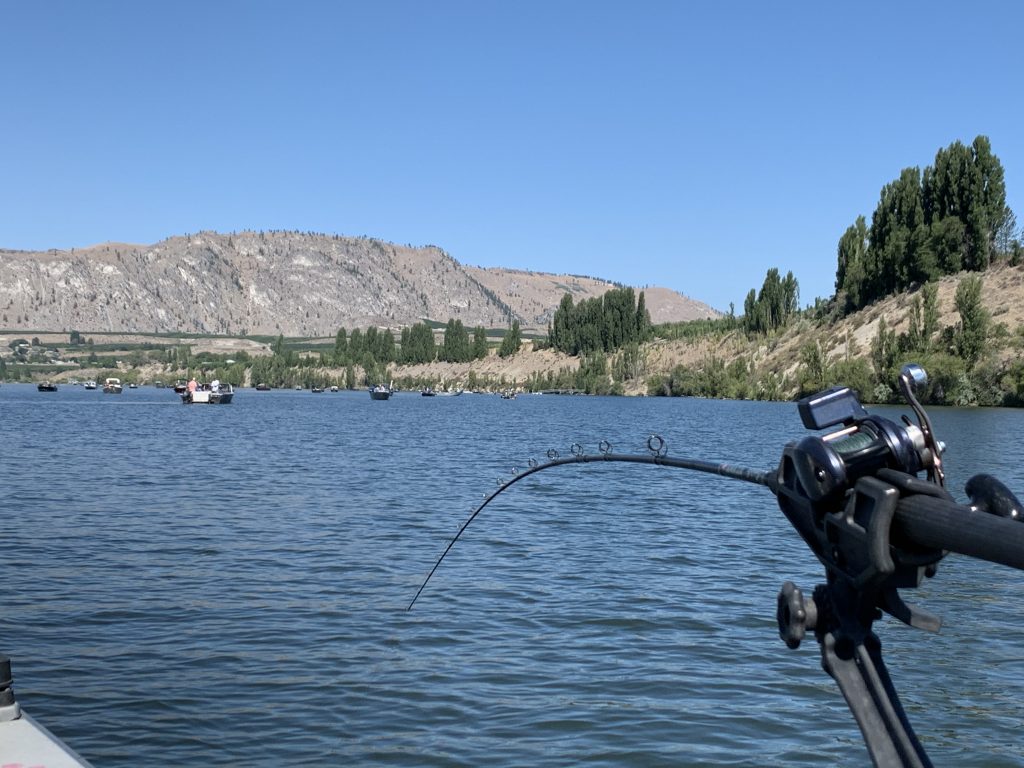
The Lake Wenatchee sockeye run – the second largest of the Columbia sockeye component – is 27,300 (39,400 was forecasted with an actual return of 56,111 in 2020, and 18,300 and 7,900 in 2019). The lake is a highly popular mid- to late-summer sport salmon fishery. The annual escapement goal is 23,000 at Tumwater Dam and only then a lake fishery can be considered.
Other sockeye forecasts are 700 for Snake River in 2021 (2,300 and 734 in 2020); and 200 for Yakima River in 2021 (2,500 and 11,790).
The remaining Columbia fall salmon forecasts will be released sometime in early 2021, but we do know that there is continued improvement for “bright” fall chinook that had a predicted return of 324,760 and could be similar in 2021.
The tule fall chinook forecast was 95,460 and the preliminary return in 2020 was similar to the forecast, and these are the most prized sport fish and a driving force in ocean fisheries and at Buoy 10 near the Columbia River mouth.
Spring chinook returns are a mixed bag
Spring chinook – the first migrating salmon to arrive in Washington – are prized for their tasty, Omega-3-laced, red-orange-colored meat, which is similar to fish from Alaska’s Copper River.
The height of the Lower Columbia mainstem return is March and April, when anglers breaking out of the winter doldrums creating an early fishing frenzy along the Columbia, but many will start poking their rods in the water starting right after the champagne pops on New Year’s Eve.
Under permanent regulations, the 2021 spring chinook fishery on the Lower Columbia will open Jan. 1 through March 31 from Buoy 10 to the I-5 Bridge.
The prediction by WDFW calls for a modest 2021 spring chinook return of 143,200 (up from a 2020 forecast of 135,800 and an actual return of 142,494). The 2021 figure is also down from 157,700 forecast but up from an actual return of 109,808 in 2019; and 157,500 and 176,642 in 2018.
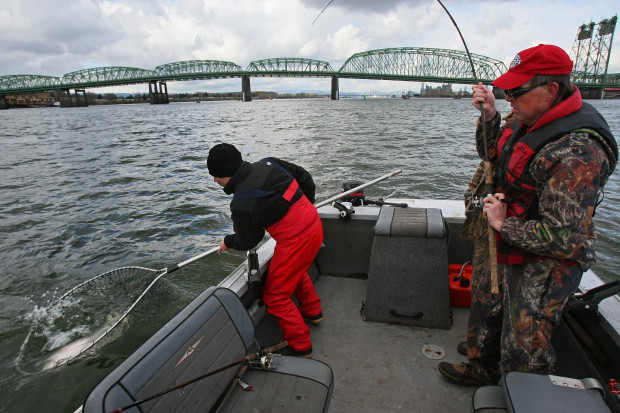
The important upriver spring chinook total is 75,200 (down from 81,700 and an actual return of 81,300 in 2020) and is 46 percent of the 10-year average return and the second lowest since 1999. The forecast is up from 99,300 and 73,101 in 2019; and down from 166,700 and 115,081 in 2018.
On the Oregon side, the 2021 Willamette River spring chinook run of 50,050 (plus 2,350 jacks) is better than a forecast of 40,570 and an actual return of 45,965 in 2020 (40,200 and 27,292 in 2019). This should allow a harvest of 15,260 Willamette springers.
Other 2021 spring chinook forecasts that reflect some good and bad are the Lower Columbia tributaries.
“Generally speaking, the lower river tributaries are a mixed bag with some higher and some lower,” Lothrop said. “The Lewis won’t be a limiter in fisheries along with the Cowlitz like last year.”
“The Kalama is better (a forecast similar to recent five-year average return of 2,400) and we should be able to provide a fishery,” Lothrop said. “The Lewis is higher than last year (20 percent higher than recent five-year average return of 1,800) and there is reason to believe that we’ll have some fishing opportunity. The Cowlitz is your question mark since it does push us into that window around the escapement goal.”
Lothrop says if there is some Lower Columbia mainstem opportunity that could also put constraints to some capacity on a sport fishery in the Cowlitz.
The preliminary 2021 forecast for the Cowlitz is 1,777 (1,400 was forecast and 908 was actual return in 2020); Kalama is 2,133 (1,000 and 1,215); and Lewis is 2,283 (1,400 and 1,874). On Oregon side, the Sandy is 5,300 (5,200 and 7,618).
There is a yearly 30 percent buffer on the Columbia spring chinook mainstem fisheries that protects against overfishing.
The Lower Columbia mainstem spring chinook fishery produced 36,250 angler trips in 2020 (the lowest since 2000) with 1,462 adult hatchery spring chinook kept and 1,218 released and 1,129 hatchery steelhead kept and 399 released. The spring season was open daily from Jan. 1-Feb. 28 from Buoy 10 to I-5 Bridge, and May 5, 7, 9, 13, 15-17 and 20 from Warrior Rock to Bonneville. The sockeye fishery opened on May 15 and 1,119 sockeye were kept and 105 released.
In 2019 and 2020 an initial emergency closure was issued on March 1 below Warrior Rock on the Lower Columbia mainstem to protect spring chinook destined for Cowlitz and Lewis. Those were followed by closures in late-March through April due to COVID-19.
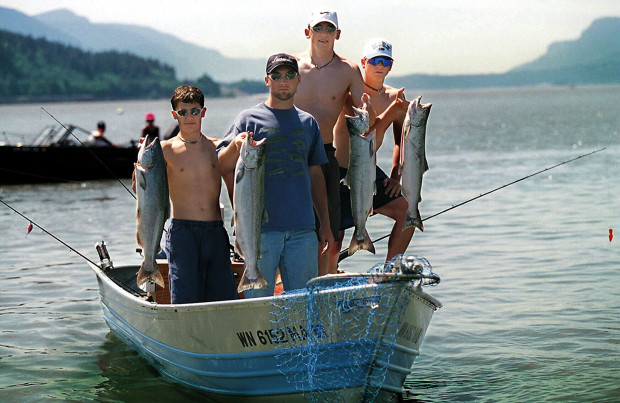
The first spring hatchery chinook of 2020 was caught on Jan. 29 in the Lower Willamette River and weighed 16 pounds. It isn’t unusual each winter to see the first few fish of the run arrive in January or early February either in the Lower Columbia, Multnomah Channel or Lower Willamette.
Spring chinook returns to tributaries above Bonneville Dam are showing some signs of improvement in 2021 although most are recovering from bad ocean conditions between 2015 and 2019 that were among the worst in the past 20 years.
The 2021 Wind forecast is 1,200 (2,000 was forecast and 2,076 was actual return in 2020, and 2,800 and 1,600 in 2019); Drano Lake aka Little White Salmon is 3,900 (4,600 and 3,841, and 5,600 and 3,600); and Klickitat is 1,500 (1,800 and 1,517, and 1,100 and 400).
The Columbia above Bonneville to McNary for spring chinook had a brief eight-day season (May 5, 7, 9, 13, 15-17 and 20) that saw 5,652 angler trips with 519 adult spring chinook kept and 159 released. The section at McNary to Oregon-Washington boundary yielded just 10 adult spring chinook kept and three released during the same time frame.
Two sections of the Snake River spring chinook season were open two days per week from May 5-22, and generated 6,757 angler hours with 326 adult spring chinook kept and 59 released.
Here’s a look at how Columbia fall salmon fisheries fared in 2020:
The Buoy 10 chinook fishery was open Aug. 14-27 plus scattered openings in September and later. It produced 66,254 angler trips (lowest turnout since 2013) with 14,323 chinook kept and 5,329 released, plus 6,474 coho kept and 7,668 released.
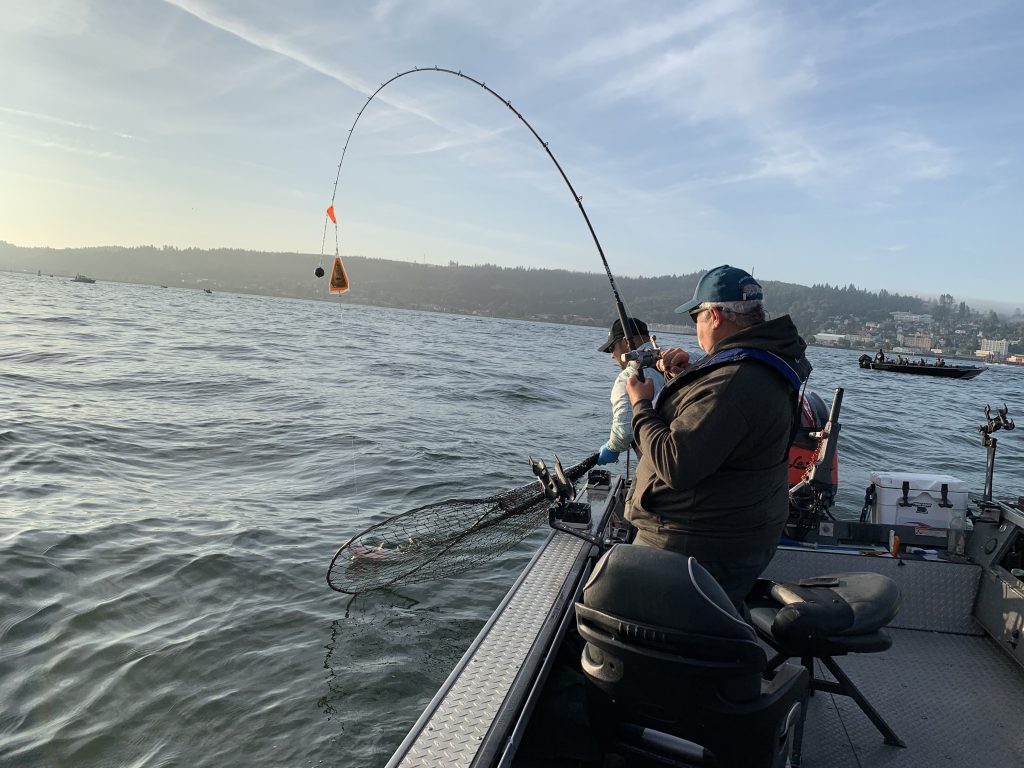
The Lower Columbia fishery from Tongue Point/Rocky Point to Bonneville was open Aug. 14-27 plus scattered openings in September and later. There were 90,413 angler trips (August to October was highest turnout since 2017) with 19,677 adult chinook kept and 752 released, plus 1,537 coho kept and 775 coho and 385 wild steelhead released.
The Columbia from Bonneville to McNary fishery was open Aug. 1-Sept. 8 plus scattered openings in September and later. It had 22,293 angler trips Aug. 1-Nov. 25 with 5,759 adult chinook kept and 343 released, plus 1,004 coho kept and 215 released and 55 steelhead kept and 275 released.
The Columbia fall season from McNary to Highway 395 Bridge had 390 angler trips with 16 chinook kept during same time frame.
The Columbia in Hanford Reach from Aug. 16-Oct. 31 had 39,028 angler trips with 14,633 adult chinook and 1,391 jack chinook kept, plus 104 coho kept and 188 sockeye and 135 steelhead released. The 2020 fishery witnessed a 23 percent increase in harvest from 2019 fishery.
Word on Columbia smelt, steelhead and shad runs
Another excellent Columbia shad run is expected in 2021. At least 6-million returned in 2020 and the 10-year average is 3.3-million. Look for another banner year of fishing starting sometime in May. In 2020 the Lower Columbia shad fishery had 17,846 angler trips with 138,247 shad kept.
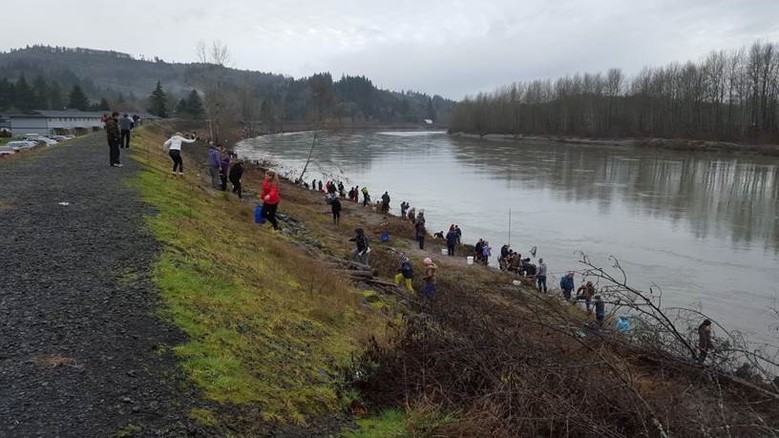
The Columbia smelt return in 2021 should see a moderate return. A spawning stock biomass estimate was unavailable this past spring due to COVID-19 sampling restrictions.
The smelt fishery in 2020 was a two-day season (Feb. 14 and 26) on the Cowlitz with sport dip-netters landing 35,000 pounds. What 2021 holds is unknown at this time, but fingers crossed.
The 2020 wild B-run Columbia summer steelhead return was significantly upgraded in mid-September from a forecast of 1,400 to 7,900 fish, but is still only 60 percent of the 10-year average. The combined hatchery and wild B-run return is about 33,500, which exceeded the preseason forecast. The combined A- and B-run total through Dec. 18 at Bonneville is 114,315.
“The B-run steelhead return surprised us in a positive sense,” Lothrop said.
Upcoming salmon meetings
Feb. 25, Ocean Salmon Industry Group 2021 forecasts and initial discussions of 2021 season options. Late February specific date TBD, WDFW public salmon forecast meeting will debut estimates for Puget Sound, Strait of Juan de Fuca, Hood Canal, Grays Harbor, Willapa Bay and remaining Columbia River areas. March 3-10, Pacific Fishery Management Council (PFMC) will adopt three initial 2021 ocean fishing options. Mid-March specific date TBD, North of Falcon (NOF) public meeting on fisheries in Puget Sound, Strait of Juan de Fuca, Hood Canal, Willapa Bay, Grays Harbor and ocean areas north of Oregon. Mid-March specific date TBD, Columbia River NOF meeting. March 23-24, PFMC public input in 2021 season options. Late-March or early-April, NOF public meeting. April 6-13, PFMC meeting to adopt final salmon fishing seasons.

